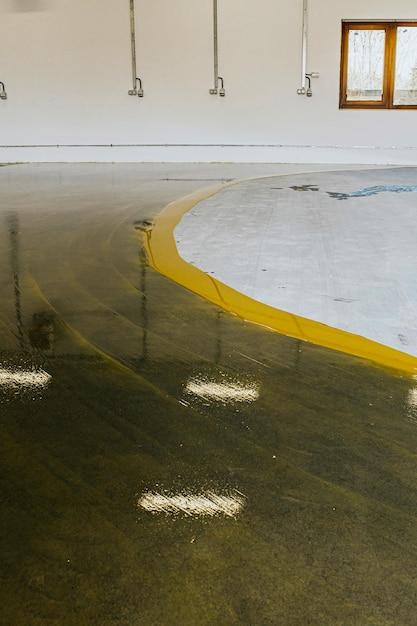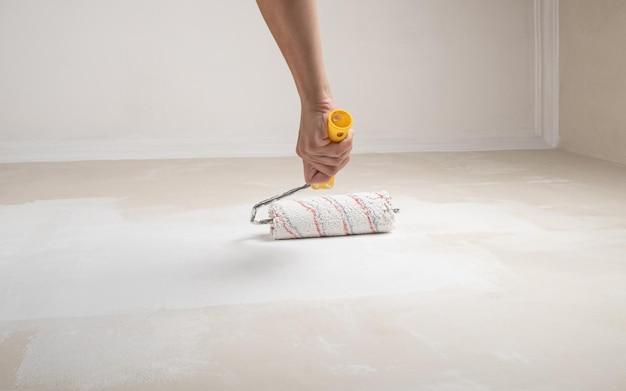Painting a surface may seem straightforward, but if you want to achieve a professional finish, understanding the specific products involved becomes essential. Among the many terms and options, paint primer and sealer are two commonly used but often misunderstood components. In this blog post, we will delve into their differences, uses, and when to employ each product in your painting projects.
Whether you’re a DIY enthusiast or a seasoned professional, it’s crucial to grasp the disparities between paint primer and sealer to ensure the best results. Can sealer be used as a primer? Is paint primer, in fact, a sealer? These questions and many more will be answered, as we explore the unique purposes and functions of these products. So, let’s dive in and eliminate any confusion, enabling you to make informed choices for your painting needs.
What Is the Difference Between Paint Primer and Sealer
When it comes to painting, it’s important to have a basic understanding of the different products available. Two commonly confused terms are paint primer and sealer. While they may seem similar, they serve different purposes in the world of painting. In this article, we’ll dive into the details of what sets paint primer and sealer apart, so you can come out with a beautifully finished project that would make Picasso jealous!
The Primer Primer
Primer: The Unsung Hero of Painting
Think of primer as the unsung hero of the painting process. Just as a superhero lays the groundwork for fighting crime, primer lays the groundwork for a flawless paint job. Its main purpose is to create a uniform surface for paint application, ensuring better adhesion and durability.
Understanding the Magic of Primer
Primer is like the magician who can make imperfections disappear. Whether you’re dealing with rough walls, stains, or old paint, primer comes to the rescue. It smooths out the surface, hides blemishes, and provides an even base for the paint to adhere to. It acts as a bridge, allowing paint to bond securely and preventing any nasty surprises down the road.
Saves Time and Money
Using a primer can save you time and money in the long run. It helps paint adhere better, so you’ll need fewer coats of paint to achieve that stunning finish. Plus, it prevents stains and tannins from bleeding through, saving you from having to deal with touch-ups later on. So, if you want a high-quality paint job that stands the test of time, primer is your trusty sidekick!
Seal the Deal with Sealer
Sealer: The Protector of Paint
Now that we’ve covered the primer, let’s delve into the world of sealers. Sealer is like the ultimate shield for your paint job. It offers protection against the elements, enhances durability, and ensures that your masterpiece stays vibrant for years to come.
Unleash the Power of Sealer
Sealer acts as a protective barrier between the paint and the outside world. It shields your paint from moisture, UV rays, harsh weather conditions, and even dirt and grime. Just like a knight in shining armor, sealer defends the beauty of your paint job, preventing it from fading, peeling, or cracking.
Boost Longevity and Performance
Applying a sealer to your freshly painted surface can work wonders for longevity and performance. It locks in the vibrancy of the colors, increases the paint’s durability, and makes maintenance a breeze. With a sealer, you can rest easy knowing that your paint job will stand tall against the test of time and remain as ravishing as the day it was applied.
Your Secret Weapon for Gorgeous Results
If you want your painted surfaces to truly shine, sealer is your secret weapon. It adds that extra touch of brilliance, luster, and glossiness, elevating your paint job to a whole new level. So, if you’re aiming for that enviable wow factor, don’t skip the sealer!
Now that you understand the difference between paint primer and sealer, you have the knowledge and power to embark on your painting endeavor with confidence. Primer sets the stage for flawless paint application, while sealer protects and enhances the beauty of your finished project. Together, they work hand in hand to create a masterpiece that would make even the most critical art snob swoon. So go forth, armed with this newfound wisdom, and let your creativity take center stage!
Frequently Asked Questions: Understanding the Difference Between Paint Primer and Sealer
Can Sealer be used as primer?
Sealer and primer may seem similar, but they serve different purposes. While sealer provides a protective layer and enhances adhesion of the paint, primer prepares the surface for the paint application. So, no, sealer shouldn’t be used as a substitute for primer.
What’s the difference between automotive primer and sealer?
Automotive primer and sealer have distinct functions. Primer acts as a bond between the surface and the paint. It helps with adhesion, provides corrosion resistance, and improves durability. On the other hand, sealer creates a smooth surface, enhances color uniformity, and minimizes imperfections. So, the main difference lies in their primary objectives.
Is paint primer a sealer?
Paint primer is not explicitly a sealer. Although it helps to seal the surface by filling imperfections and preventing moisture intrusion, its primary function is to provide adhesion for the paint. However, some primers may have sealing properties, blurring the line between the two.
Can you use sealer over paint?
Using a sealer over paint is not ideal. Sealer works best when it is applied directly to the prepared surface before painting. Applying sealer over paint may not deliver the desired results, as it may not adhere properly or provide the same level of protection.
Can I clear coat over primer?
Yes, you can apply a clear coat over primer. In fact, it is a common practice in automotive painting. Clear coat acts as a protective layer, enhancing the durability and appearance of the painted surface.
How many coats of filler primer do I need?
The number of coats of filler primer you need depends on the condition of the surface and the desired result. In general, applying two to three coats, with sufficient drying time between each, is recommended. This allows for proper filling of imperfections and achieving a smooth surface.
How long after 2k primer can I paint?
2k primer typically requires a drying or curing period before painting. The exact time may vary depending on the product, temperature, and humidity. It is usually recommended to wait at least 24 hours before applying paint over 2k primer. However, always refer to the manufacturer’s instructions for specific guidelines.
What is a good automotive primer sealer?
There are several excellent automotive primer sealers available on the market. Some popular options include products from reputable brands like 3M, Dupli-Color, and Rust-Oleum. It’s essential to consider factors such as your project requirements, surface type, and compatibility with the paint you intend to use.
Should I use primer or sealer?
Whether you should use primer or sealer depends on your specific needs. If you want to improve adhesion and increase paint durability, primer is essential. On the other hand, if you’re looking to create a smooth surface and enhance color uniformity, sealer is the way to go. In some cases, using both primer and sealer may be necessary for the best results.
Is primer waterproof?
Primer itself is not explicitly waterproof. However, some primers may have water-resistant properties, protecting the underlying surface from moisture to a certain extent. It’s always good practice to check the specifications of the primer you’re using to understand its waterproofing capabilities.
Can you spray base coat over epoxy primer?
Yes, you can spray base coat over epoxy primer. Epoxy primer provides excellent adhesion and corrosion resistance, making it a suitable base for the application of base coat and other paint layers. However, ensure that the epoxy primer has properly cured before applying the base coat.
How long can primer sit before painting a car?
The amount of time primer can sit before painting a car depends on various factors such as ambient temperature, humidity, and the specific type of primer being used. In most cases, it is recommended to paint within 24 to 48 hours after applying the primer for optimal results. However, always refer to the manufacturer’s instructions for the recommended waiting time.
When should I use primer?
Primer should be used whenever you want to achieve better adhesion and durability for your paint job. It is particularly important when painting over bare metal, repairing damaged surfaces, or changing paint colors. Additionally, if the existing surface has poor adhesion or is too porous, using a primer becomes crucial for a successful painting project.
Is primer and sealer the same thing?
No, primer and sealer are not the same thing. While there may be some overlap in their functions, primer is specifically designed to enhance adhesion, provide corrosion resistance, and promote paint durability. Sealer, on the other hand, focuses on surface smoothness, color uniformity, and minimizing imperfections.
Do you need to seal paint?
In most cases, it is not necessary to seal paint after it has dried. Modern paints are typically formulated to withstand environmental factors without the need for additional sealing. However, if you want to add an extra layer of protection or enhance the durability of the paint, you can consider applying a clear coat over it.
Can you use paint as a primer?
While it may be tempting to skip the primer and use paint as a substitute, it’s not advisable. Paint and primer serve different purposes. Primer prepares the surface for paint, ensuring better adhesion and longevity. Paint, on the other hand, provides color and protection. By using primer, you set the foundation for a successful paint job.
What is self-etching primer used for?
Self-etching primer is specifically formulated to adhere to bare metal surfaces, such as aluminum and steel. It contains an acid that chemically etches into the metal, providing excellent adhesion and corrosion resistance. This type of primer is commonly used in automotive, marine, and other metal-related applications.
What primer do I use over body filler?
When applying primer over body filler, it is recommended to use a high-quality automotive primer. 2k urethane primer is a popular choice as it provides excellent adhesion, fills imperfections, and promotes a smooth surface. Always follow the body filler manufacturer’s instructions and consult with a professional for specific recommendations.
Does paint and primer in one work?
While paint and primer in one products have become popular, their effectiveness can vary depending on the surface and the specific product. In some cases, they may work well for minor touch-ups or previously painted surfaces in good condition. However, for optimal results, it is generally recommended to use separate primer and paint layers, especially for more demanding projects.
What type of primer should I use on my car?
The type of primer you should use on your car depends on the specific needs of the project. However, for most automotive applications, 2k urethane primer is a reliable choice. It provides excellent adhesion, corrosion resistance, and is compatible with a wide range of topcoats. Make sure to choose a primer suitable for the surface material and consult with experts when needed.
Remember, choosing the right primer and sealer can significantly impact the outcome of your paint job. By understanding their differences and functions, you can make informed decisions for a successful and long-lasting finish.

